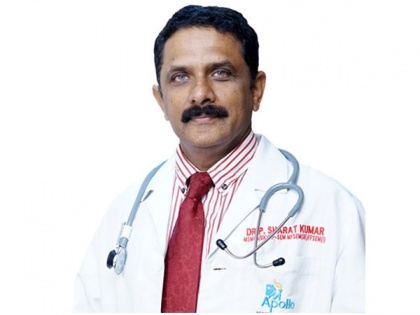Evolving dynamics in total hip replacement patient care
By ANI | Published: March 26, 2021 11:12 AM2021-03-26T11:12:27+5:302021-03-26T11:20:03+5:30
Learning is a dynamic process in any surgical field and surgeons evolve with experience, gaining confidence to deal with more complex and challenging clinical cases.

Evolving dynamics in total hip replacement patient care
Learning is a dynamic process in any surgical field and surgeons evolve with experience, gaining confidence to deal with more complex and challenging clinical cases.
Dr Paripati Sharat Kumar, MS(Ortho), MCh(Ortho)UK, Dip. SEM-GB&I, MFSEM(UK), FFSEM(I), Consultant Orthopedic Surgeon, Apollo Health City, has been performing joint replacements in Hyderabad since 2006 when he returned from United Kingdom after 11 years of gaining extensive orthopedic experience. He tells us more in conversation.
Experience of over three decades in joint replacement surgery particularly in single stage double total hip replacements and minimally invasive direct anterior approach in recent times gave me the confidence to perform day care procedure. There is convincing clinical evidence that day care joint replacements are here to stay and there are many advantages to this. The Apollo home care healthcare initiate ensures the safety of the patient discharged is not compromised in any way and his/her well being and comfort is prioritized.
With technological advances, remote monitoring and assessment have become possible paving way to a robust multidisciplinary home care support team. Out patient joint replacements procedures are increasing exponentially in the West. Reports predict that in about 6 years 50 per cent of joint replacements will be done as day care.
There is growing evidence that shows simultaneous double total hip replacements are as safe as sequential hip replacements. Improvements in anesthesia, pain management, surgical techniques and implant design, make it is safe for double total hip replacement. There are multiple benefits and patients would prefer to undergo both same day and avoid another surgery and rehabilitation, thereby saving on significant time as well as overall surgery expenditure.
Patient selection is crucial as all patients are not suitable candidates and every case has to be considered on an individual basis in order to avoid complications particularly in the elderly with multiple medical conditions. Performing bilateral total hip replacements can be demanding and it is essential to have experience and familiarity in different types including cemented, uncemented and hybrid type of total hip replacements.
Direct anterior approach is a preferred choice in hip surgery. Conventional approaches involve cutting muscle that support and stabilize hip joint, while in direct anterior approach the muscles are separated to reach and expose the joint.
Further, the size of the incision is short ensuring less healing time, risk of infection, bleeding and associated pain. Rehabilitation is quicker and the incidence of dislocation of hip joint is less.
Patients today have more expectations and are not satisfied with just pain free walking after total joint replacement. Advances in surgical techniques coupled with latest innovations in implant materials and designs, ensure excellent functional outcome.
It is always prudent to be safe than sorry as hip dislocation or premature loosening of implant can occur if hip joint is subjected to excess stress or extreme range of movement. Regular exercises improve strength, flexibility, and increases the range of movements and joint stability.
Ramaya Reddy underwent single stage double total hip replacement at Apollo Health City under my care in January 2014 and it is heartening to see this well-known yoga guru perform impeccable yoga despite undergoing surgery. He is well aware of imminent risk of dislocation, but his passion to perform yoga has taught him to strike a balance between safe and risky hip movements, helped by his remarkable flexibility, strength and overall fitness.
It is certainly one of the most complex and complicated case as he had no movement in both hips due to fusion causing significant disability. Due to long standing nature he had wasting of muscles around both his hips and loss of bony anatomic landmarks. I was concerned about the high probability of dislocation and clinical necessity made me to consider minimally invasive direct anterior approach where hip dislocation is less likely. He recovered very well and I am delighted that he achieved most gratifying functional outcome.
For more details contact
This story is provided by Mediawire. will not be responsible in any way for the content of this article. (/Mediawire)
( With inputs from ANI )
Disclaimer: This post has been auto-published from an agency feed without any modifications to the text and has not been reviewed by an editor
Open in app